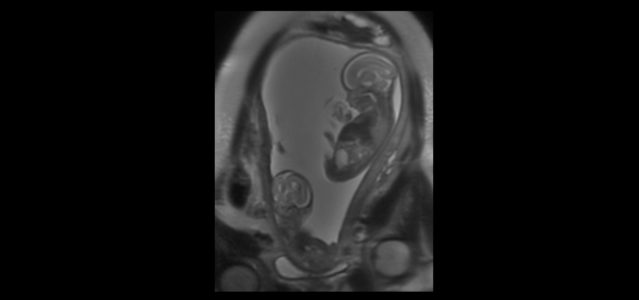
Babies are a lot of work after birth, especially twins. But in the womb, twins, especially those who are identical, can be difficult as well. One of the problems that arise in a twin pregnancy is called twin twin transfusion syndrome. In the case of identical twins, the babies share the same placenta (monochorionic), but have their own amniotic sac (diamniotic). Because they are sharing, sometimes the cords of the two twins connect by communicating blood vessels. When this happens, one baby gets too much blood and the other not enough. This is called twin twin transfusion syndrome and occurs in about 10-20% of monochorionic diamniotic pregnancies. In this instance, the baby with too much blood will have a large bladder and increased amniotic fluid and can develop heart failure. The baby with low blood has a small bladder, low amniotic fluid and does not grow normally. Both babies are at risk for brain injury and death, with no treatment leading to 80-100% mortality.
At Cincinnati Children’s, we can change the outcome for these twins. At our center, we perform ultrasound and echocardiogram (ultrasound of the heart) studies to confirm that the twins are experiencing twin twin transfusion syndrome. We also perform fetal MRI to look at the babies’ brains to make sure there has not been injury. Fetal MRI is very sensitive at looking at the developing brain and detecting a brain bleed or a lack of blood supply. If the twins do have significant twin twin transfusion syndrome, our fetal care doctors will perform fetoscopic laser surgery to ablate the communicating vessels. We have been able to save many twin lives; at Cincinnati Children’s, survival of one twin is 92% and both is 77%. We continue to work towards increasing the survival rate for both twins.
Contributed by Dr. Beth Kline-Fath and edited by Bessie Ganim, (RT-NucMed).